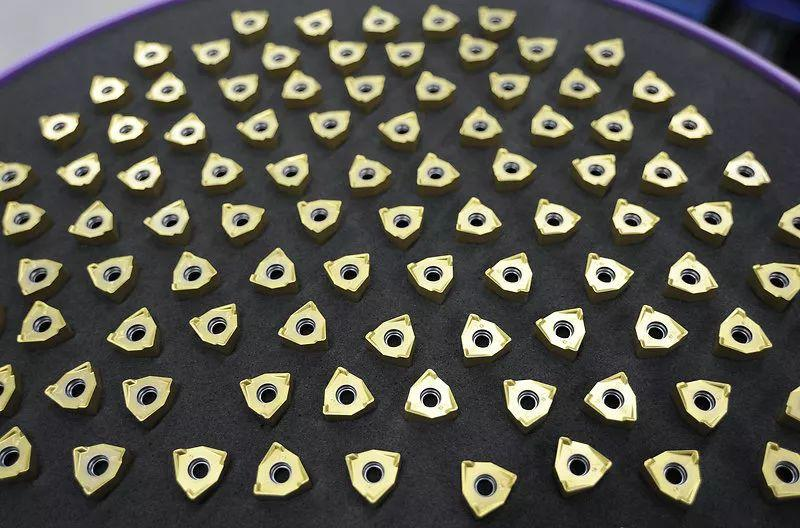Today, powder metallurgy has come a long way and is not far from the world’s hardest material, diamond.
Powder? It sounds incredible, but one of the world’s hardest materials is made from powder.
Here’s what’s behind the production of tungsten carbide inserts.
Powder
Tungsten oxide is mixed with carbon and processed in special furnaces to form tungsten carbide, the main raw material for all carbides. Tungsten carbide is an extremely hard and brittle material and is used as the main component of carbide. Tungsten carbide is mixed with cobalt, which is essential for the properties of carbide. The more cobalt, the tougher the carbide; the less cobalt, the harder and more wear-resistant it is. The weight ratios of the different components are made with the utmost precision. A batch of 420 kg of raw materials cannot vary by more than 20 grams. Mixing is a delicate metallurgical operation. Finally, the mixture is ground into a fine and refined powder in a large ball mill. The mixture must be spray-dried to achieve the correct flowability. After grinding, the powder has a particle size of Ø 0.5-2.0 um.
Pressing
First, the basic shape and size are obtained by pressing with a punch and die in a highly automated CNC-controlled press. After pressing, the blade looks very similar to a real carbide blade, but the hardness is far from the required level. A robot transfers the pressed blade to a disc made of heat-resistant material.
Sintering
For hardening, the blade is heat treated at 1500 degrees Celsius for 15 hours. The sintering process causes the molten cobalt to bond with the tungsten carbide particles. The sintering furnace process does two things: the blade shrinks significantly, which must be accurate to obtain the correct tolerances; secondly, the powder mixture is transformed into a new material with metallic properties, which becomes carbide. The blade is now as hard as expected, but not yet ready for delivery. Before the next production step, the blade dimensions are carefully checked in a coordinate measuring machine.
Grinding
The carbide blade can only be given the correct shape by diamond grinding. The blade undergoes various grinding operations depending on the geometric angle requirements. Most grinding machines have built-in measurement controls to check and measure the blade in several stages.
Edge Preparation
The cutting edge is treated to obtain the correct shape for maximum wear resistance for the required process. These inserts can be brushed with special brushes with silicon carbide coating. Whatever the processing method is used, the final result must be checked. 90%-95% of all inserts have some kind of coating. Make sure that there are no foreign particles on the surface of the insert to prevent them from adhering to the coating and affecting the performance of the tool.
Coating
Chemical vapor deposition (CVD) and physical vapor deposition (PVD) are two existing coating methods. The choice of which method depends on the material and the processing method. The coating thickness depends on the insert application. The coating determines the durability of the insert and the life of the insert. The technical know-how is to apply many very thin layers of coatings on the surface of the cemented carbide, such as titanium carbide, aluminum oxide and titanium nitride, which can greatly increase the service life and durability.
If the CVD method is used for coating, the blade is placed in a furnace, and chlorides and oxides are added in gaseous form along with methane and hydrogen. At 1000 degrees Celsius, these gases interact and also act on the surface of the carbide, so that the blade is coated with a homogeneous coating only a few thousandths of a millimeter thick. Some coated blades have a golden surface, which makes them more valuable and their durability is increased by 5 times compared to uncoated blades. PVD, on the other hand, is sprayed on the blades at 400 degrees Celsius.
Final inspection, marking and packaging
The blades pass through an automated inspection, and then we laser mark the material on the blades and finally pack them. The blade boxes are marked with product information, serial number and date, which is a promise to ensure that users get excellent quality and service.
Warehouse
After packaging, the blades are ready for delivery to customers. We have logistics centers in Europe, the United States and Asia to ensure that the blades are delivered to customers quickly and in good condition.
Post time: Feb-19-2025


